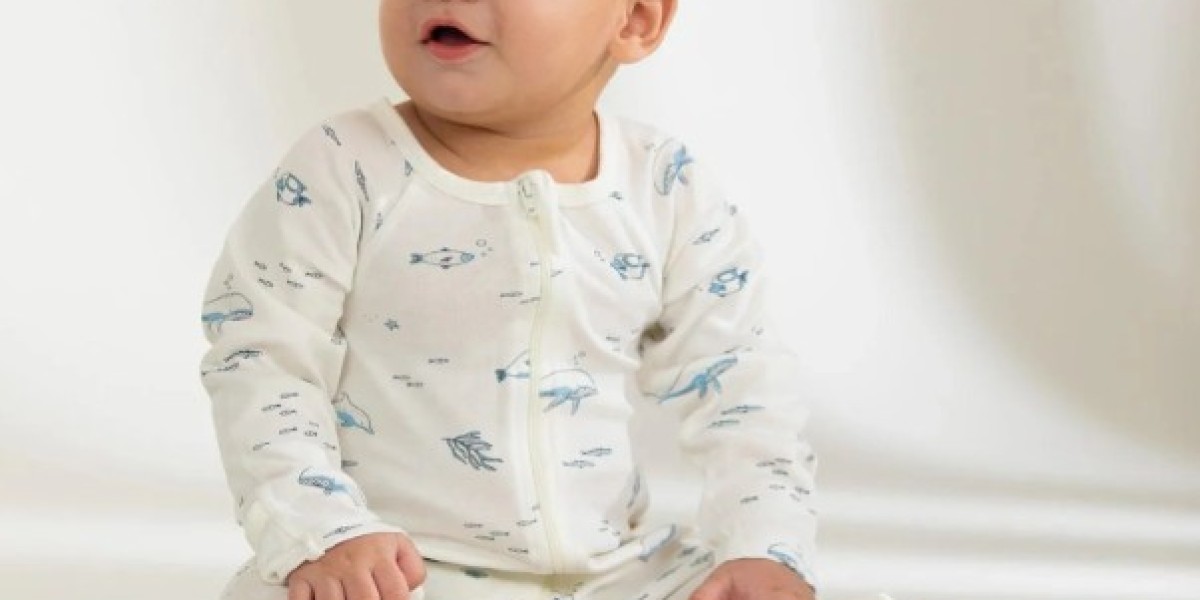Ask any Indian parent what clothing item they’ve used the most in their baby’s first year, and chances are high that they’ll say baby rompers. Rompers, also known as onesies or bodysuits, are often overlooked when shopping for newborn clothes—but they quickly become a lifesaver.
In the early weeks, when everything is new, messy, and overwhelming, baby rompers offer a small but important gift to parents: simplicity.
From quick diaper changes to cozy nap times, rompers keep your baby comfy and make your life a little easier. Here's why every Indian baby wardrobe should include a stack of thoughtfully chosen rompers.
What Exactly Is a Baby Romper?
A romper is a one-piece outfit that covers a baby’s torso and often the legs. Some have short sleeves, some are full-sleeved, and some even have footed bottoms for extra warmth. Rompers are typically fastened with snap buttons or zippers, making them extremely easy to take on and off.
For parents in India, rompers serve as an ideal in-between option—comfortable like a jabla but secure like a complete outfit.
Why Baby Rompers Are So Loved in Indian Homes
1. Simple Dressing in One Step
Traditional baby dressing in Indian households can involve multiple layers: a vest, a jabla, a langot, and a wrap. Rompers simplify this routine. They eliminate the need for separates—one piece and your baby is fully dressed.
This ease becomes especially important during late-night changes or when your baby is fussy. In a romper, dressing time is cut in half, giving you more time to cuddle, feed, or just rest.
2. Perfect for India’s Changing Climate
India’s weather is as diverse as its people—hot summers, wet monsoons, and chilly winters. The right romper can adjust to all these changes:
Sleeveless cotton rompers are ideal for summer afternoons.
Short-sleeve rompers work well in mild or humid weather.
Full-sleeve footed rompers keep your baby warm during winter nights or in AC rooms.
Layerable rompers allow you to add a jabla or a light sweater on cooler mornings.
Opting for rompers made from breathable organic cotton helps regulate body temperature naturally, making them suitable year-round.
Healthier Skin, Happier Baby
Newborn skin is fragile. Rough seams, synthetic fabrics, or tight elastics can cause irritation, rashes, and discomfort. Indian summers, in particular, can worsen these conditions with sweat and humidity.
That’s why more and more parents are turning to organic cotton rompers—they’re soft, chemical-free, and gentle on baby skin.
OhMyBebe’s rompers, for example, are made from GOTS-certified organic cotton, ensuring your baby is wrapped in only the safest materials. No harsh dyes. No synthetic threads. Just pure comfort.
Everyday Moments Where Rompers Help
Baby rompers aren't just for one occasion—they fit into every part of your baby’s daily routine:
Feeding sessions: Easy to wash and easy to wear
Playtime: Roomy enough for rolling, crawling, and kicking
Naptime: Cozy without being too warm
Travel: Lightweight and compact, ideal for your diaper bag
Outings: Subtle prints and Indian-inspired designs look beautiful in family photos
The convenience of having your baby in a one-piece, all-day outfit that doesn’t ride up or twist around is unmatched.
How Many Rompers Should a Parent Keep?
It depends on how often you do laundry, but here’s a simple breakdown for babies under 1 year:
6–8 daily rompers for everyday use
2–3 warm or footed rompers for sleep or cool weather
2 festive rompers for special occasions, pujas, or outings
1–2 spare rompers in your diaper bag for emergencies
Buy a mix of sizes (0–3 months, 3–6 months, 6–12 months) to be ready for sudden growth spurts.
What to Look for When Buying Baby Rompers
Not all rompers are created equal. Here’s what Indian parents should consider:
Fabric: Go for 100% organic cotton—lightweight, breathable, and chemical-free
Fastening: Snap buttons are ideal for newborns; zippers with safety flaps for older babies
Seams: Look for flat seams and tagless labels to avoid skin irritation
Design: Minimalist, baby-safe prints or traditional motifs work well for family settings
Fit: Should be snug at the neck and wrists but loose around the tummy and legs
Choosing rompers that meet these criteria ensures your baby stays comfortable and safe all day.
Combining Modern and Traditional Babywear
In many Indian households, babywear traditions are still strong—cotton jablas passed down from grandparents, langots stitched at home, or hand-embroidered topis gifted at the baby shower.
Rompers don’t replace these customs. They work alongside them. A baby can wear a soft romper under a wrap, or a jabla over a sleeveless romper during cooler nights. Some rompers now even feature Indian-inspired patterns like elephants, paisleys, or earthy tones—allowing you to blend heritage with comfort.
Final Thoughts
Your baby’s first year is filled with tiny challenges and beautiful milestones. And while clothes may seem like a small part of the journey, they play a big role in your baby’s daily comfort.
A romper may look like just another outfit. But for a parent, it’s a time-saver, a skin-saver, and a sanity-saver.
Whether it’s a nap in your arms, a yawn after a feed, or that first big laugh during playtime—your baby deserves to feel soft, safe, and loved. Rompers help make that happen, one button at a time.








